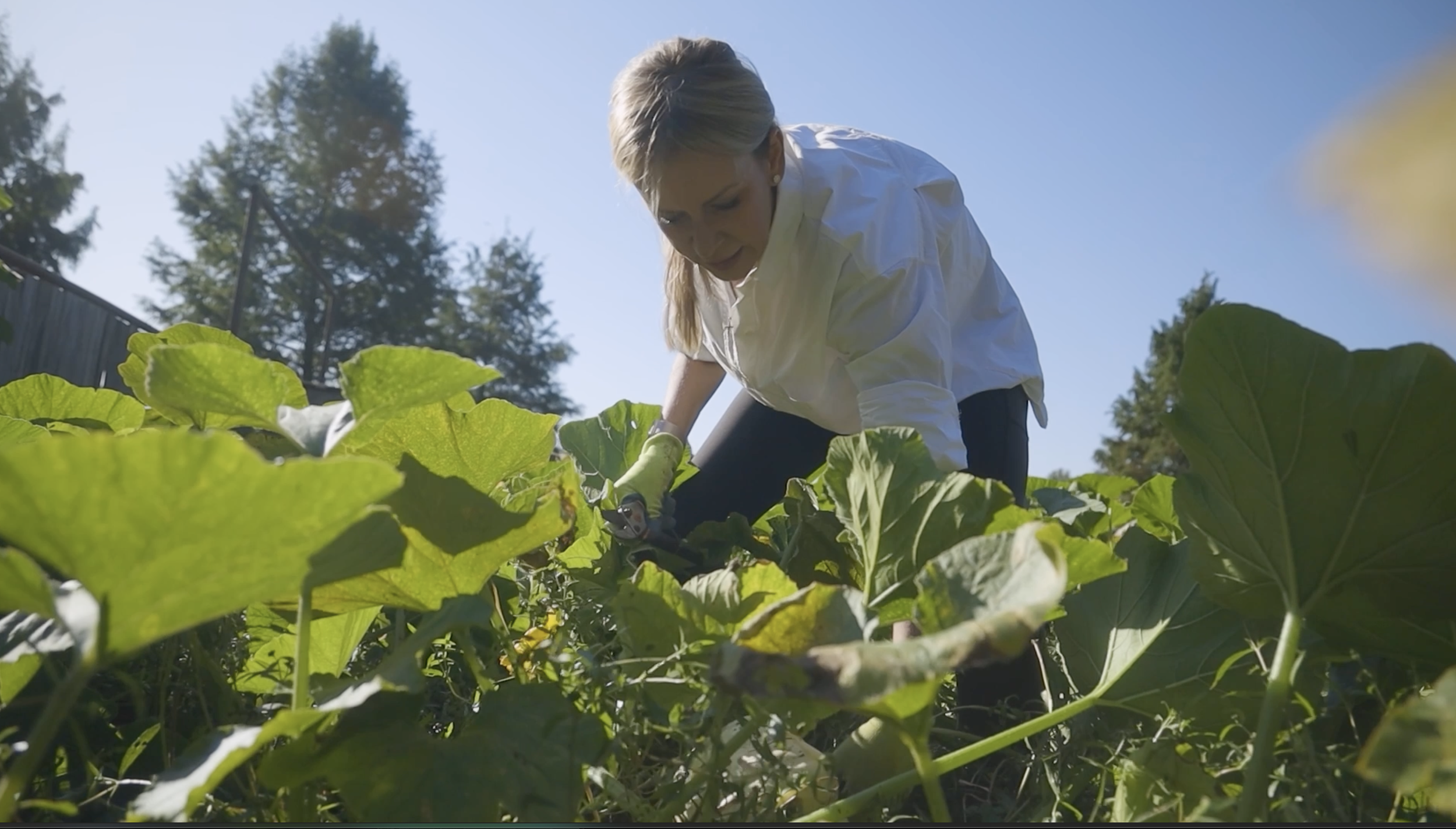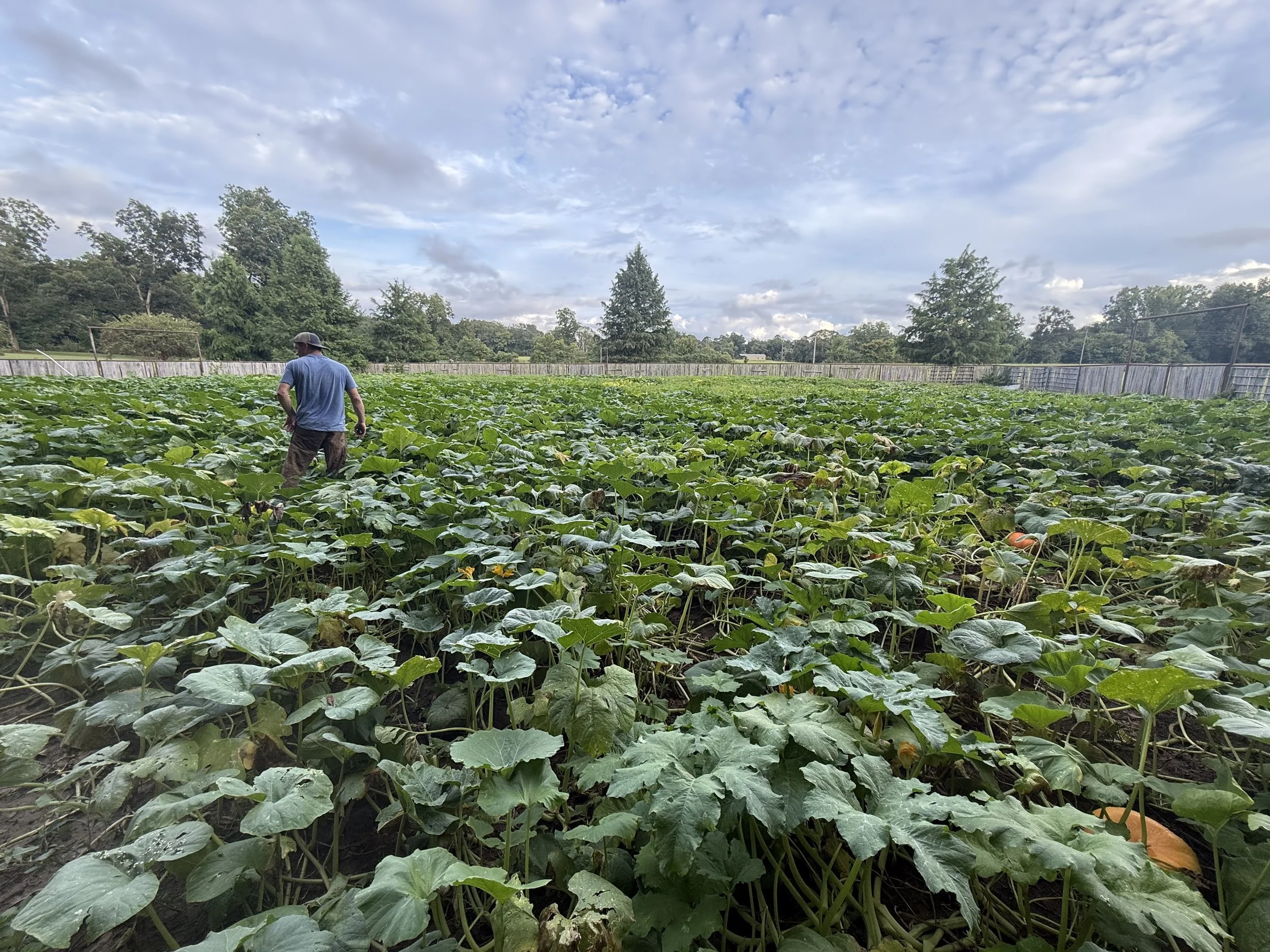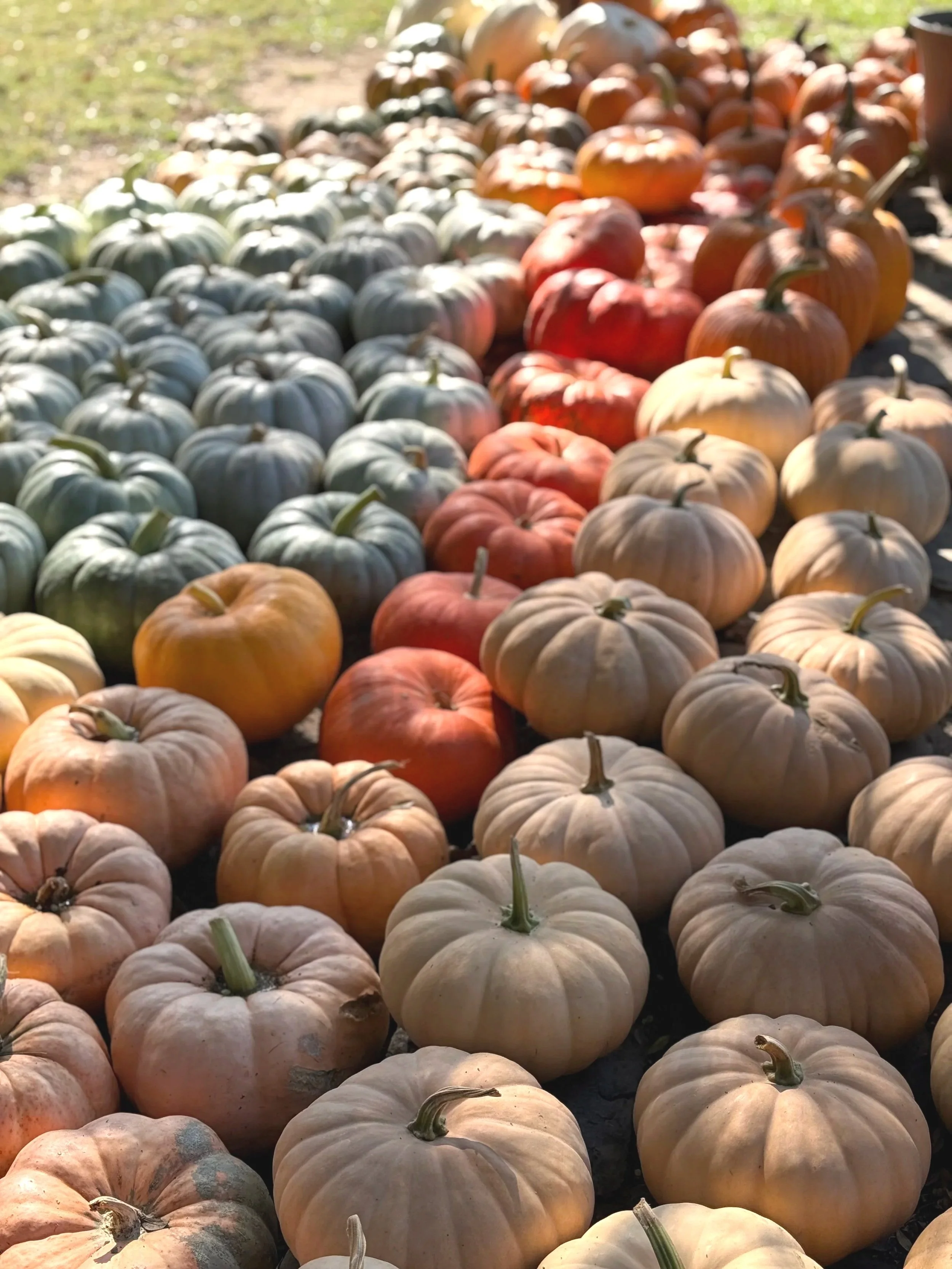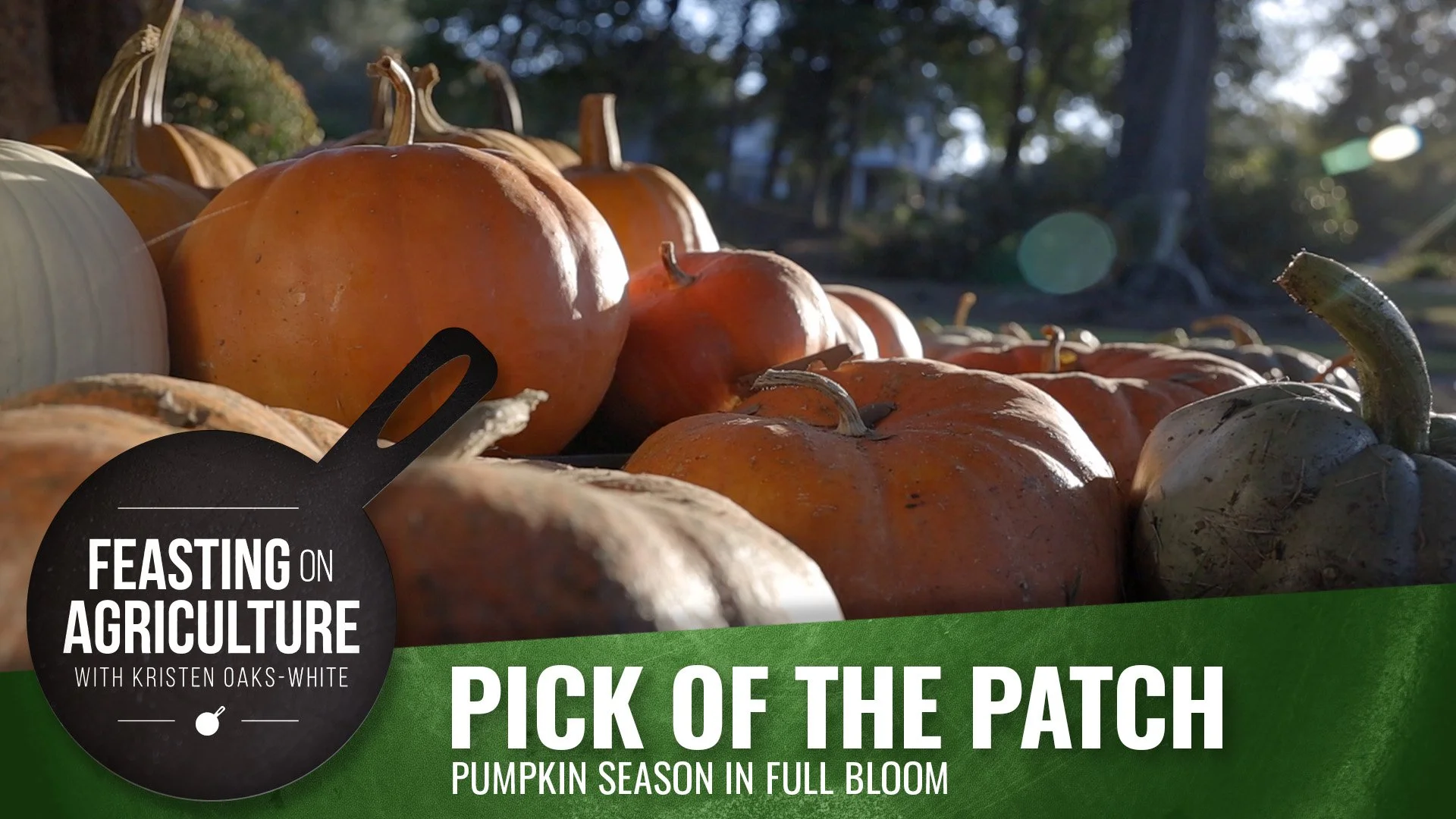Feasting on Agriculture -- The Diary of a Reluctant Pumpkin Farmer
It’s fall in Louisiana, which means two things: the weather might dip below 90, and I’m officially knee-deep in pumpkins.
My husband, Landon, likes to remind people that he planted them. I like to remind people that I’ve picked over 1,000 of them… while he’s picked, generously speaking, about ten. Maybe eleven if you count the one he accidentally stepped on.
To be fair, this project was 100% his brainchild. We started this whole adventure about five years ago when we moved out to the country. He had dreams of roping steers in our new horse arena. But long story short, somehow that turned into a pumpkin patch. Don’t ask me why — it just happened.
In fact, I was pretty sure he’d lost his mind that first year. At that point, I wasn’t even sure you could grow pumpkins this far south. I even started documenting his comical pumpkin journey on Snapchat — “The Diary of a Pumpkin Farmer.” People were amused, and surprisingly curious.
But fast-forward about 90 days, and I found the joy in this new journey we’d embarked upon — pumpkins were everywhere! I was sold at that point.
Landon finds extreme pleasure in reminding me that his “crazy” idea plants such delight for me each fall. Despite the joy of harvest season, I never seem to want to replicate the process when June rolls around. While I love watching those tiny pumpkins start to appear on the vines — and eventually picking them — I always remember the work it takes to get to that point.
For the first three years, we planted every seed by hand, one by one, under the scorching July sun. I swear that was the closest I’ve ever been to a heat stroke in my life.
But this year, he had the wild idea to construct a “pumpkin planter” from an old grain planter. Wild, but brilliant might I add — and a lot more gracious on my back.
I would also like to point out that pumpkin season does not always line up well with Landon’s soybean crop. It never fails — when he’s busy spraying soybeans or starting harvest, the pumpkins also demand attention. So this became my job: replanting seeds that never came up, fertilizing plants, scouting for unwanted critters, and irrigating with soaker hoses, sprinklers, and even by hand at times. Not to mention picking the pumpkins when they’re ready to harvest — all in the blazing, hellish heat of the summer.
I say all that to say this — he was right. Despite the work, I can’t deny the sheer joy I find in this process. There’s something supremely satisfying about finding a big, beautiful pumpkin hidden under the leaves. It’s like an Easter egg hunt… only sweatier and with more dirt under your nails.
And here’s what I’ve learned: growing pumpkins in the deep south is not for the faint of heart. They’re planted in early summer — when the rest of the world is sipping sweet tea in the shade — and they spend months baking in the sun. Ours grow in sandy soil that heats up fast, so irrigation is key. Skip a few days and you’ll have vines as crispy as Sunday bacon. But not too much water — pumpkins despise wet feet. Overwatering or wet leaves = mold trouble. Mulch helps retain moisture and suppress weeds.
Weeds? They come back like bad decisions — fast and relentless. Once the vines spread, it’s hard to control them, and if you don’t stay on top of it early, you’ll be fighting jungle warfare by July.
Bugs and critters? Don’t even get me started. Between squash vine borers, stink bugs, cucumber beetles, birds, and raccoons on midnight snack runs, it’s a full-time job just protecting your harvest.
Most pumpkins take 90 to 120 days to mature. Pumpkin vines can grow as much as six feet per day and reach lengths of up to 30 feet (yes, 30!). Those vines don’t just sprawl — they sprint.
Pumpkins produce both male and female flowers. The first blooms you see might be male blossoms (they don’t turn into pumpkins). The female ones have a little bulge at the base — those are the ones that can become fruit once pollinated, often by bees. A single bee can visit hundreds of blossoms in a day, making pollinators essential for a good crop.
So yes — growing pumpkins in the Deep South is a challenge. The heat, the pests, the weeds that don’t take days off — but somehow, we’re pulling it off. This year’s patch is the biggest we’ve ever had, and the earliest crop, too.
We’ve cultivated quite the cast of pumpkins this season: Jarrahdale, Porcelain Doll, Musque de Provence, Long Island Cheese, Igor, Speckled Hound, Cinderella, Casperita, Polar Bear, Pip Squeak, and Mello Yellow. Some are showy, some are edible, and each one has its own personality.
Before they head off to porches or kitchens, they all get a quick bleach or vinegar bath to help them last longer — a little pumpkin spa treatment, if you will. If treated well, pumpkins can store for months in a cool, dry place. But those that are bruised or picked too early won’t last.
On the show, we took one of our Long Island Cheese pumpkins and turned it into pumpkin cream cheese muffins and pumpkin cheesecake ice cream — using local ingredients like Louisiana cane sugar, butter, and eggs. From field to kitchen in one afternoon.
Our marriage summed up in one image…
So next time you see a gorgeous pumpkin on a porch or in a pie, remember: someone sweat, cursed, watered, and harvested that beauty. Behind its smooth rind is a whole story of persistence, pests, and plenty of laughs.
Until next time — I’ll be in the patch, picking my heart out and keeping count, because I’m still way ahead on the pumpkin scoreboard. 🎃
























